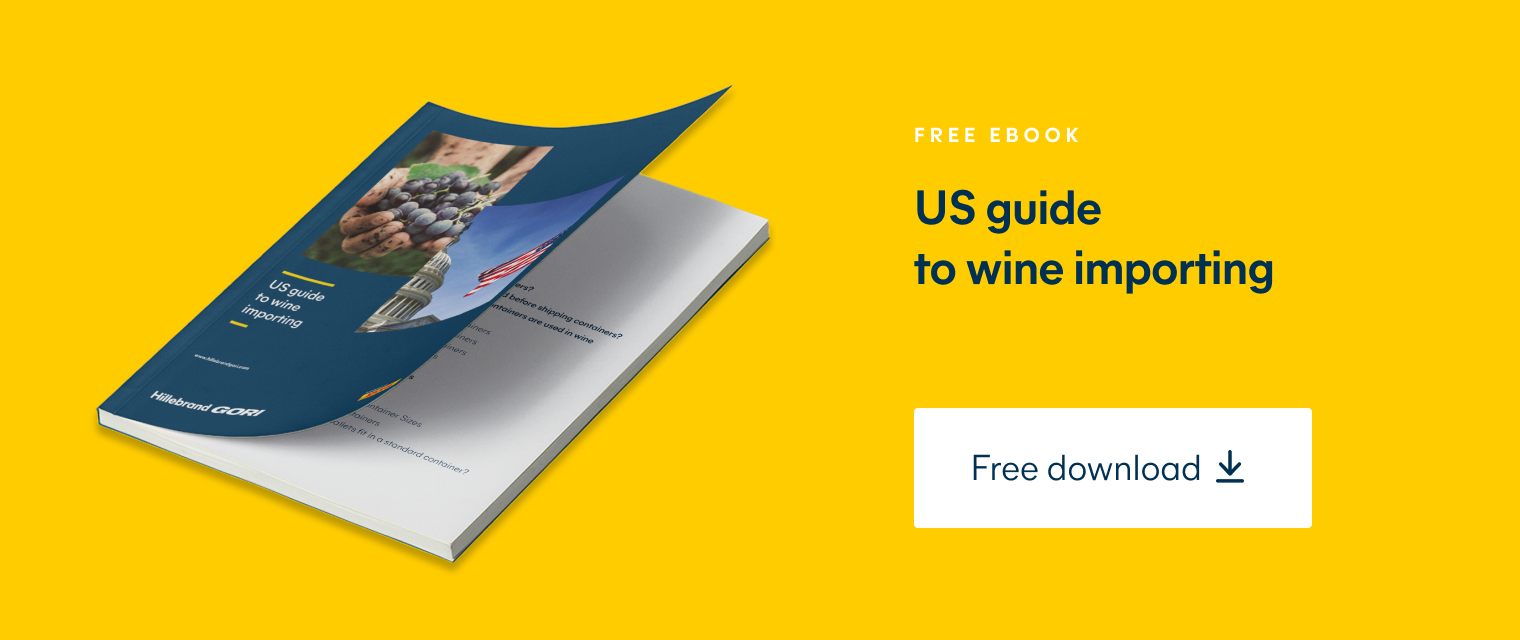Share this post
Imports, exports and global trade in today’s wine business
If you’ve ever enjoyed a Fiano d’Avellino from Italy, a Carmenere Gran Reserva from Chile, or a Cabernet Sauvignon from Australia, you’ll appreciate just how much imports and exports are at the heart of today’s wine industry. International trade lets wineries reach a global audience and allows customers to enjoy a world full of wine. Read on to get a snapshot of the latest state of imports and exports in the wine industry.
What are imports and exports?
Imports are simply any products or services purchased and received from a company based in another country. For example, if someone in the UK orders and receives wine from France, that’s an import.
Imports can be sent by road, sea, air, rail or even email! Customers usually import goods and services because either their own countries cannot produce them, they can be made cheaper or to a higher standard elsewhere, or just because they want to try something different. Imports range from raw materials to finished products such as bottled wine.
In contrast, when goods and services are sold in foreign markets they are considered exports by the country that produces and sells them. So, if a winery in Italy sells and ships Chianti to the US, that's an export.
Why is importing and exporting so important?
Imports and exports fuel economies, create jobs and broaden consumer choices. The balance between a country’s imports and exports is used as a measurement of how well its economy is doing. If a country exports more than it imports it creates a trade surplus, which can be a sign of a good economy. If it imports more, it creates a trade deficit and it means a lot of the country’s wealth is being spent in foreign markets. Ideally, in a strong economy, both imports and exports should be growing.
Imports and exports are the keys to our modern consumer society: there are customers everywhere and they all want goods. But natural resources and know-how are not evenly distributed around the globe, so we need to move products from where they’re made to where they’re wanted.
For instance, grapes can only grow well in certain soils and climates and wine-making is a delicate process that requires knowledge and experience.
That’s why the wine industry is dominated by a handful of countries with the right conditions and skills like France, Spain, Italy, Chile, and Australia. Each wine producing country boasts its own signature styles and markets them to the world.
For example, the distinctive terroir of the French countryside can't be replicated in Japan, making it necessary for the Japanese to import French wines if they want to enjoy their unique flavors. The same applies to the crafting of Sake.
Imports mean countries with low production but high consumption like Norway or the UK can meet demand and wine lovers can experience the diversity of the world’s wines without even leaving their neighborhoods.
Meanwhile exports enable wine makers to sell beyond their local markets. Often these aren’t large enough to sustain the industry, especially in New World wine countries where the production capacity far outstrips domestic demand.
A very brief history of wine imports and exports
Globally, wine imports and exports are almost as old as wine-making itself, dating back at least to the ancient civilization of the Phoenicians. Later, the Greeks and Romans exported wine and winemaking all around the Mediterranean and across Europe.
But international trade really started booming in the 1960s with the invention of the modern shipping container. Pioneered by Malcom McLean, a trucking entrepreneur from North Carolina, the shipping container revolutionized imports and exports, making the whole process faster, cheaper, and more efficient. Now, around $14 trillion of global trade uses container transportation at some stage of its journey and 90 percent of goods are transported by sea in containers.
This development, coupled with decreasing tariffs and trade barriers, has fuelled a consistent growth in international wine trade over the last few decades.
Wine imports and exports in 2022
Overall international imports and exports of wine have been rising, with 107mhl traded in 2022 compared to 60mhl in 2000. More than 80% of countries show positive trends in wine imports and there has been particularly strong growth in Canada, Poland, and Norway in recent years.
However, the iconic wine countries of France, Italy, and Spain remain the world’s three biggest exporters.
Here are the lists of top importers and exporters in 2022:
Imports of wine into major countries in 2022 | |
US | 14.4mhl |
Germany | 13.4mhl |
UK | 13.0mhl |
France | 6.1mhl |
Netherlands | 4.6mhl |
Canada | 4.2mhl |
Russia | 3.9mhl |
China | 3.4mhl |
Belgium | 3.3mhl |
Portugal | 2.8mhl |
Exports of wine from major countries in 2022 | |
Italy | 21.9mhl |
Spain | 21.2mhl |
France | 14.0mhl |
Chile | 8.3mhl |
Australia | 6.4mhl |
South Africa | 4.4mhl |
Germany | 3.5mhl |
Portugal | 3.3mhl |
New Zealand | 3.0mhl |
US | 2.8mhl |
Italy is the world's top wine producer with 49.8mhl of output in 2022. It also dominated the wine export market, shipping 21.9mhl worldwide. The country comes in third globally in terms of consumption with 23.0mhl. However, having imported just 2.2mhl, Italy doesn’t even make the top ten global importers, so it’s safe to assume Italians prefer homegrown wines to imports.
France is the only one of the big three producers to also feature in the top ten importers list. Despite producing 45.6mhl and exporting 14.0mhl, it imported a substantial 6.1mhl putting it at number four globally, with 75% of the volume imported made up of bulk wine.
Still, total consumption was 25.3mhl meaning the French are still uncorking plenty of their national product.
The Spanish wine industry produced 35.7mhl of vino in 2022 and sustained strong export figures with 21.2mhl of wine traded abroad. But the Spanish consumed just 10.3mhl, meaning it’s a tough market for wine importers. In fact, the country is way down at number 28 globally for imports.
With a consumption demand of 34.0mhl, the US is the world's biggest wine consumer. But its 22.4mhl of production just can’t satisfy the American appetite for wine. So it’s also the world's number one importer with 14.4mhl shipped into the country in 2022 making it a lucrative market for international winemakers.
Germany is another country where production (8.9mhl), can’t keep up with an insatiable demand. Germans drank 19.4mhl of wine in 2022 and needed substantial imports of 13.4mhl to quench their thirst.
What’s the best way to move imports and exports of wine?
The task of shipping sensitive wine across borders calls for specialists who understand the specific needs of the wine industry. An experienced beverage freight forwarder like Hillebrand Gori can help ensure that your wines are transported seamlessly and safely.
We offer a variety of services to cater to whatever quantity of wine you want to ship.
If your imports/exports business involves moving wine long distances in bulk, you can take advantage of our specially-designed flexitanks that protect your wine from the risks of taint compounds and oxygen spoilage.
With Less than Container Load (LCL), you can move loads as small as a single pallet and share the container costs with other shippers. Thanks to our groupage service, you can be sure that your wine won’t be tainted by contaminating odors as we will only pack your wine with other beverages.
If you want to move larger volumes of wine you can choose our Full Container Load (FCL) option and reserve an entire container for yourself. With FCL you can choose to upgrade to an insulated or refrigerated container to better safeguard your wine from condensation, bad odors, humidity, cross-contamination, and thermal shock.
Contact us today to find out how we can help you ship your wine.
An import is a shipment of goods received into a country from another. An export is a shipment of goods sent from one country to another.
In 2021, the world's three top imported products were crude petroleum (US$951bn), integrated circuits (US$823bn), and refined petroleum (US$746bn). Cars were fourth with US$723bn traded globally and imports of broadcasting equipment were fifth with a value of US$473bn. For comparison, the total value of wine traded globally in 2022 was US$41.24bn.
In 2022, the US was the largest wine importer in the world by volume and value. It imported 14.4mhl (million hectolitres) which is valued at €7bn.
Germany was the second largest wine importing country in terms of volume (13.4mhl) but third when it comes to value (€2.7bn).
The UK imported 13.0mhl putting it third by volume, but with those imports worth €4.8bn, the UK is in second place for value.
The biggest exports from the United States are refined petroleum, petroleum gas, crude petroleum, automobiles, and integrated circuits. Most US exports go to Canada, Mexico, and China.
With US$3.38tn imported in 2022, the US is the top importer in the world. China is second with US$2.7tn in imports and Germany is third with US$1.6tn.
China comes top and exported almost US$3.6tn in 2022. The US comes in second with US$2tn in exports, followed by the US$1.7tn exported by Germany.
How can we help your business grow?





